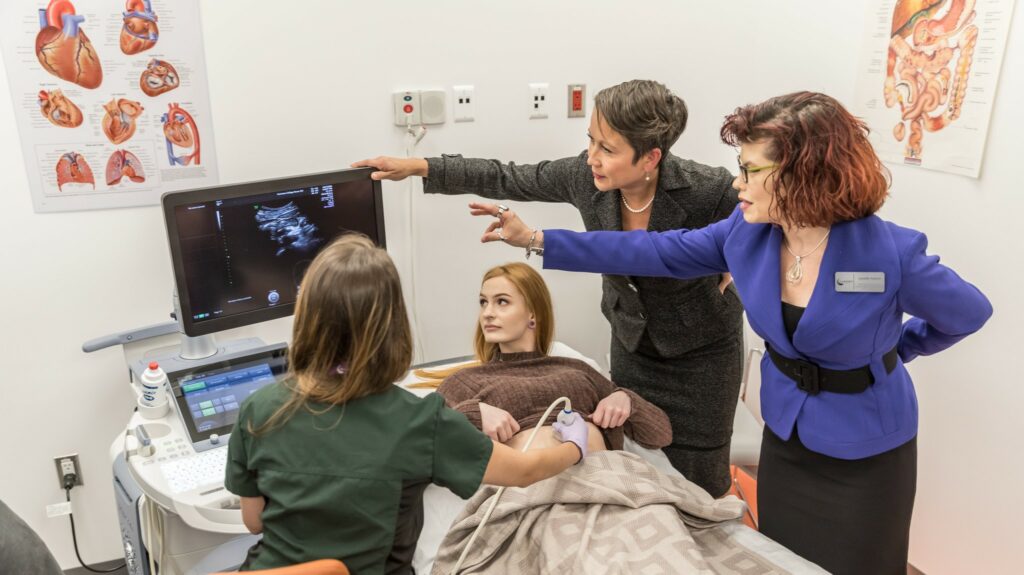
Our Story
Historically, Canadian Diagnostic Medical Sonography (DMS) learning has been formalized through a largely clinical approach for the past two decades. Considering the overwhelming demand for new DMS technologists and the tremendous limitations for access to expanded student clinical hours, a new, innovative approach to cmlagraphy education is required.
Following the successful pair scanning pilot study at CNIH, and the current explosion in highly realistic simulation technology, Camosun College developed an innovative new kind of program that seeks to merge the most advantageous elements of each to reduce the overall number of total clinical placement hours required to validate Sonography Canada’s entry-to-practice clinical capabilities for new graduates.
This approach required a re-examination of how developmental learning scaffolds with the demonstration of clinical competencies. By transferring the responsibility for the “skill development learning curve” over to the educational program, we’ve increased the efficiency of clinical time – and therefore, have reduced the social cost of expanding program seats within health authorities already overburdened by tremendous waitlists and staffing pressures.
The functional premise of the program is that through simultaneous content education augmented by high-tech simulation and extensive laboratory practice; students will be able to demonstrate small, discrete scanning competencies within actual clinical practice environments during and in combination with their continual skill development and didactic preparation. Having reached a relative level of entry-to-practice skill prior to a shorter final practicum in which students demonstrate the consolidation of their skill sets and complete their Sonography Canada Clinical Competency Skills Assements (CCSAs).